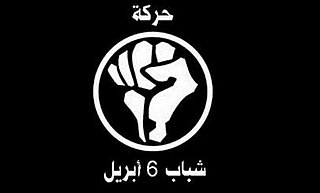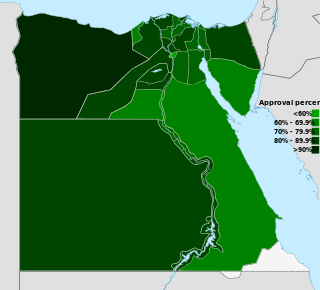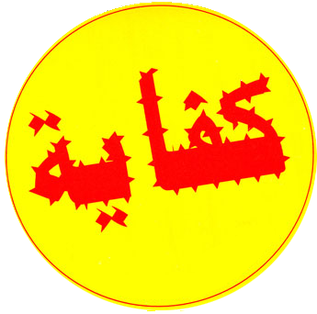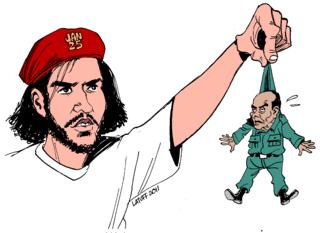 W
WThe Egyptian revolution of 2011, also known as the 25 January Revolution, started on 25 January 2011 and spread across Egypt. The date was set by various youth groups to coincide with the annual Egyptian "Police holiday" as a statement against increasing police brutality during the last few years of Mubarak's presidency. It consisted of demonstrations, marches, occupations of plazas, non-violent civil resistance, acts of civil disobedience and strikes. Millions of protesters from a range of socio-economic and religious backgrounds demanded the overthrow of Egyptian President Hosni Mubarak. Violent clashes between security forces and protesters resulted in at least 846 people killed and over 6,000 injured. Protesters retaliated by burning over 90 police stations across the country.
 W
WHuman rights in the post-Mubarak transition have been the subject of concern and controversy since the 2011 Egyptian revolution. The Supreme Council of the Armed Forces (SCAF) Arabic: المجلس الأعلى للقوات المسلحة, al-Maǧlis al-ʾAʿlā lil-Quwwāt al-Musallaḥah in particular have been the focus of concerns about human rights violations. The SCAF, which consists of a body of 20 senior officers in the Egyptian military, was handed the power to govern Egypt after the ouster of President Hosni Mubarak on 11 February 2011 as a consequence of the revolution.
 W
WThe following is a chronological summary of the major events that occurred during the Egyptian Revolution of 2011, after Hosni Mubarak's resignation. Protests and riots led to the deaths of hundreds, injuries of thousands and the arrests of tens of thousands. Millions have mobilised the streets since the revolution.
 W
WThere have been numerous domestic responses to the Egyptian revolution of 2011. Opposition parties, activists and religious bodies have been staunchly demanding Egyptian President Hosni Mubarak's resignation, with the exception of fearful Christian authorities, who called for staying away from the protests. The government has made ongoing attempts at media censorship, including briefly shutting down nearly all Internet traffic.
 W
WThe April 6 Youth Movement (Arabic: حركة شباب 6 أبريل) is an Egyptian activist group established in Spring 2008 to support the workers in El-Mahalla El-Kubra, an industrial town, who were planning to strike on 6 April.
 W
WThe Constitutional Declaration of 2011 was a measure adopted by the Supreme Council of the Armed Forces of Egypt on 30 March 2011. The declaration was intended to serve as the fundamental law of the country pending the enactment of a permanent constitution, following the resignation of President Hosni Mubarak on 11 February.
 W
WA constitutional referendum was held in Egypt on 19 March 2011, following the 2011 Egyptian revolution. More than 14 million (77%) were in favour, while around 4 million (23%) opposed the changes; 41% of 45 million eligible voters turned out to vote.
 W
WOn 29 July 2011, EgyptAir Flight 667, a Boeing 777 on a scheduled passenger flight from Cairo, Egypt, to Jeddah, Saudi Arabia, suffered a cockpit fire on the ground at Cairo Airport, while preparing to depart. There were no fatalities, but seven people were treated for smoke inhalation. The aircraft was damaged beyond economic repair.
 W
WThe Girl in the Blue Bra is the name given to an image of an Egyptian woman who participated in the Tahrir Square protests in opposition to Egypt's Supreme Council of the Armed Forces (SCAF), the military coup that ousted Hosni Mubarak during the 2011 Egyptian Revolution in opposition to Mubarak's presidency. Her name has been undisclosed, and therefore she cannot be properly identified. The image receives its title due to the fact that the woman was stripped of her abaya while being dragged by Egyptian soldiers from the square, revealing her jeans, bare skin, and her blue bra. Such an event sparked widespread national and global reactions from individuals and the media.
 W
WSaad Eddin Ibrahim is an Egyptian sociologist and author. He is one of Egypt's leading human rights and democracy activists, and a strong critic of former Egyptian president Hosni Mubarak.
 W
WThe Ilan Grapel affair was an alleged Israeli espionage incident in Egypt involving dual U.S.-Israeli citizen Ilan Grapel. On 12 June 2011, Egyptian authorities arrested Grapel on charges of fomenting unrest in Egypt as a Mossad agent in the wake of the 2011 Egyptian revolution. While Israel and Grapel's friends and family firmly rejected the charges, the Egyptian government never provided evidence to support its claim.
 W
WThe 2011 Israeli border demonstrations started on 15 May 2011, to commemorate what the Palestinians observe as Nakba Day. Various groups of people attempted to approach or breach Israel's borders from the Palestinian-controlled territory, Lebanon, Syria, Egypt and Jordan. At least a dozen people were killed when protesters attempted to cross the border from Syria.
 W
WKefaya is the unofficial moniker of the Egyptian Movement for Change, a grassroots coalition which prior to the 2011 revolution drew its support from across Egypt's political spectrum. It was a platform for protest against Hosni Mubarak's presidency and the possibility he might seek to transfer power directly to his son Gamal; political corruption and stagnation; "the blurring of the lines between power and wealth; and the regime's cruelty, coercion and disregard for human rights."
 W
WOperation Eagle was an Egyptian military campaign in the Sinai Peninsula, that was launched in August 2011 to confront the Sinai insurgency. The campaign was aimed against Islamist insurgents, who had been attacking the Egyptian security forces in the Sinai and using the area as a base from which to attack Israel since early 2011. Successive Egyptian operation against insurgents in 2012, named Operation Sinai, was initially referred as the second part of Operation Eagle. It was the first in a number of campaigns to retake the Sinai from insurgents that lasts to this day.
 W
WParliamentary elections were held in Egypt held from 28 November 2011 to 11 January 2012, following the revolution that ousted President Hosni Mubarak, after which the Supreme Council of the Armed Forces (SCAF) dissolved Parliament. However the dissolution was ruled unconstitutional and Parliament was reinstated. Originally, the elections had been scheduled to be held in September 2011, but were postponed amid concerns that established parties would gain undue advantage.
 W
WThe Wael Mikhael incident occurred on 9 October 2011 when two Egyptian journalists, Wael Mikhael—also known as Wael Yunna and Mikhael; also spelled Mikhail—and Mina Daniel, were killed while covering a demonstration that turned into a violent clash between the Egyptian military and Coptic protesters. Mikhael was reporting as a cameraman for the Coptic Orthodox Christian TV station in Cairo and was shot in the head while filming what was supposed to be a peaceful demonstration. Mina was reporting as a political activist blogger and was shot in the shoulder and leg.